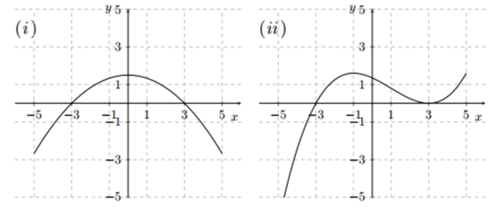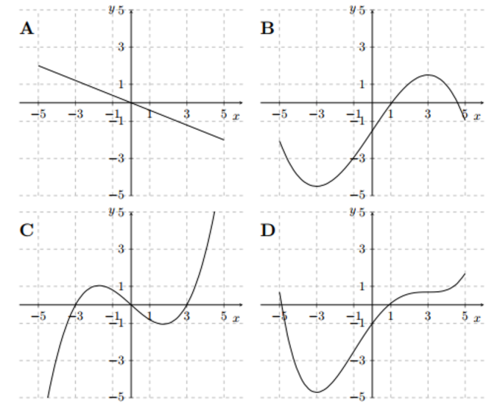Science:Math Exam Resources/Courses/MATH103/April 2017/Question 01 (d)
{{#incat:MER QGQ flag|{{#incat:MER QGH flag|{{#incat:MER QGS flag|}}}}}}
• Q1 (a) • Q1 (b) • Q1 (c) • Q1 (d) • Q1 (e) (i) • Q1 (e) (ii) • Q1 (e) (iii) • Q1 (f) • Q2 (a) • Q2 (b) (i) • Q2 (b) (ii) • Q2 (c) • Q3 (a) • Q3 (b) • Q3 (c) • Q3 (d) • Q4 • Q5 • Q6 (a) • Q6 (b) • Q7 (a) • Q7 (b) • Q7 (c) • Q8 (a) • Q8 (b) • Q8 (c) • Q9 (a) • Q9 (b) • Q9 (c) • Q9 (d) • Q9 (e) •
Question 01 (d) |
|---|
|
For each graph (i) and (ii), identify the graph (A-D) which depicts its antiderivative and determine a consistent starting point of the integral. |
|
Make sure you understand the problem fully: What is the question asking you to do? Are there specific conditions or constraints that you should take note of? How will you know if your answer is correct from your work only? Can you rephrase the question in your own words in a way that makes sense to you? |
|
If you are stuck, check the hint below. Consider it for a while. Does it give you a new idea on how to approach the problem? If so, try it! |
Hint |
|---|
|
By the fundamental theorem of calculus, we have . Also, notice that |
|
Checking a solution serves two purposes: helping you if, after having used the hint, you still are stuck on the problem; or if you have solved the problem and would like to check your work.
|
Solution |
|---|
|
We observe that the functions in graphs (i) and (ii) are continuous, so by the fundamental theorem of calculus, we must have . Let us first consider the function in graph (i). The function, , is negative when , positive when , and negative again when . Hence its antiderivative must be decreasing when , increasing when , and decreasing again when . This matches the function in graph B. To determine a starting point , we note that we must have and that the only clearly identifiable zero of the function in graph B is at . We conclude that the graph of in this case is B and that is a consistent starting point. Next, let us consider the function in graph (ii). The function, , is negative when , positive when , and still positive when . Hence its antiderivative must be decreasing when , increasing when , and still increasing when . This matches the function in graph D. To determine a starting point , we note that we must have and that the only clearly identifiable zero of the function in graph D is at . We conclude that the graph of in this case is D and that is a consistent starting point. |
{{#incat:MER CT flag||
}}














